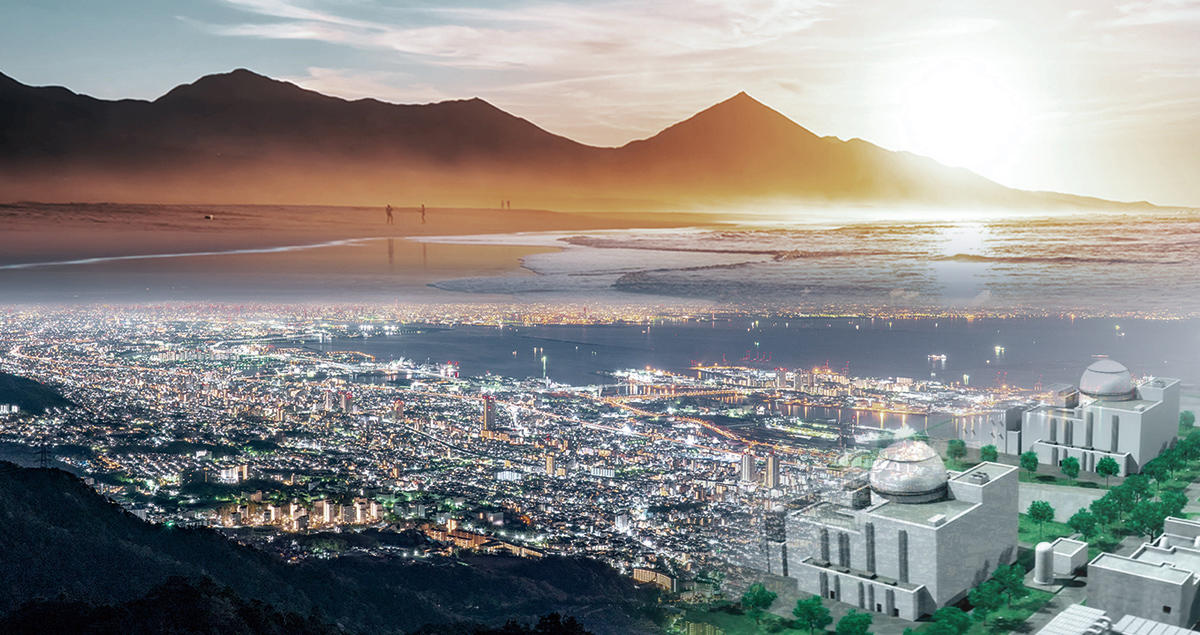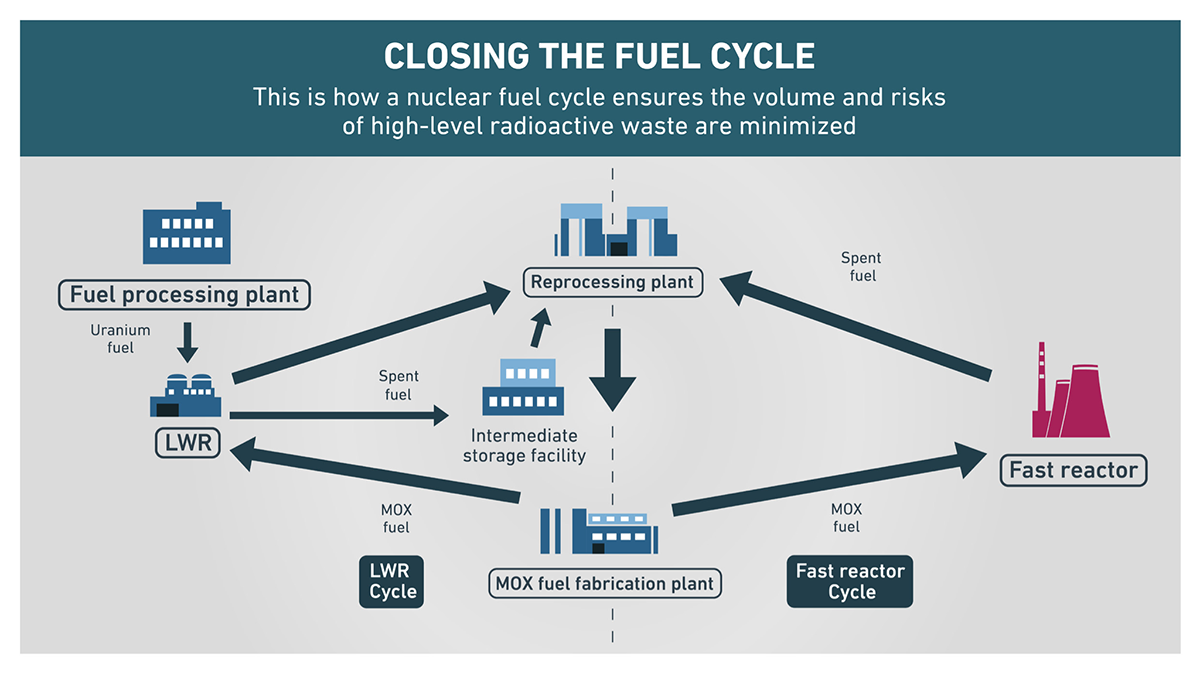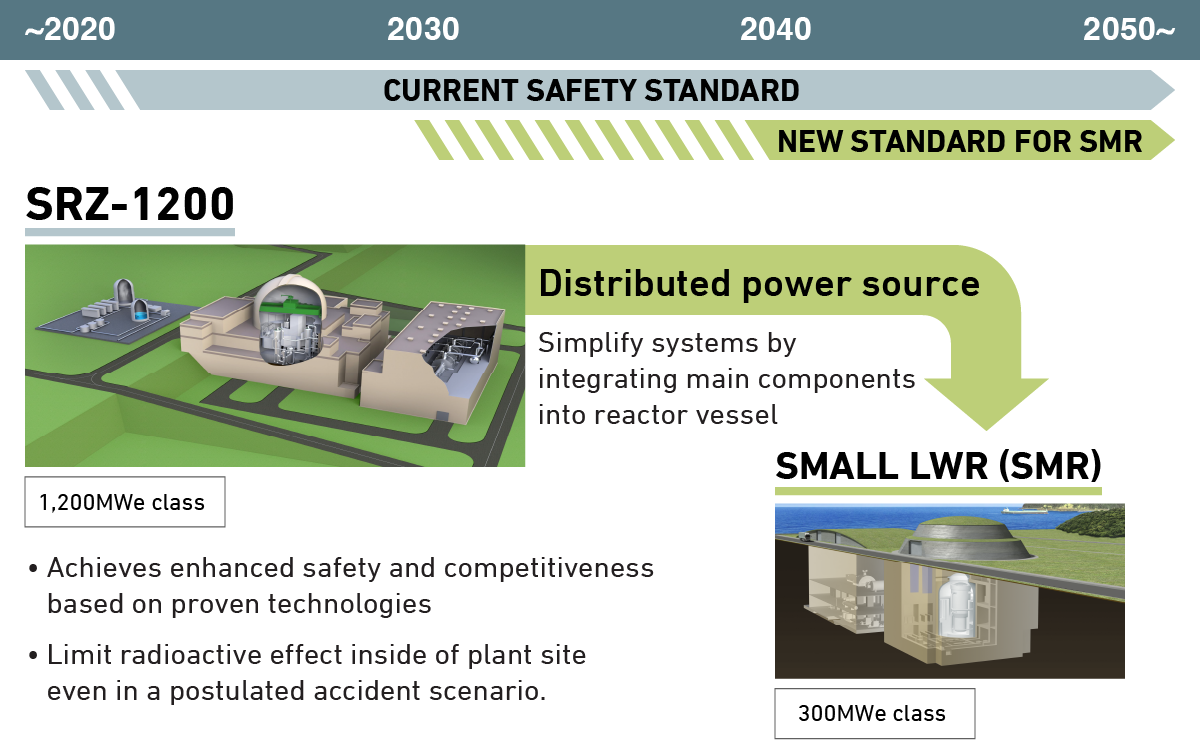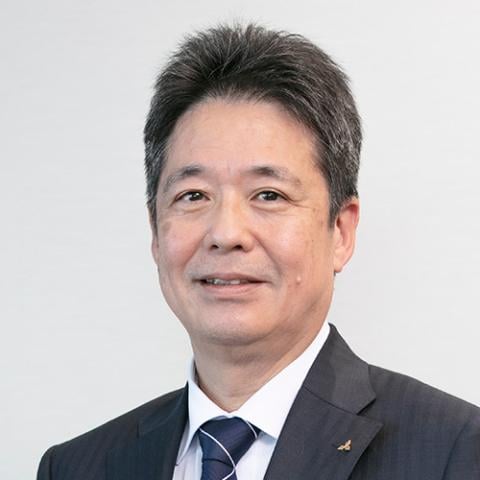A nuclear revival for Japan, the world and MHI

This article was previously published in our newsletter, if you're not already a subscriber, sign up here.
In the last couple of years there has been a remarkable shift in attitudes to nuclear power in Japan – one that was unimaginable in the challenging days following the accident at Fukushima in 2011.
According to opinion polls conducted by the Nikkei newspaper, 70% of Japanese nationwide once again support the restart of nuclear plants.
Policymakers and those involved in the nuclear industry have long believed that its ability to generate baseload power that is both reliable and clean means it will be an essential part of Japan reaching its 2050 decarbonization targets. After all, we live in a country with few natural resources and limited land that is suitable for renewables. But what has influenced the general public?
The public: changed thinking
I believe there are a number of factors. Growing awareness that nuclear energy can help reduce CO2 emissions certainly helps; so do rising concerns about energy security. The spike in electricity prices due to the Ukraine conflict has hit the public consciousness in a similar way to the oil shocks of the 1970s that I remember growing up.
Most importantly, perhaps, ordinary consumers have noticed that electricity costs less in areas where nuclear plants have been switched on again: power is cheaper in western Japan such as Kansai and Kyushu than in Tokyo and east Japan. The fact that nuclear power is cheaper than fossil fuels and even – currently – renewables like wind and solar, is an underappreciated fact.
This is borne out by a comprehensive 2021 study from METI, Japan’s industry ministry, which shows that this is the case even if nuclear’s capital and decommissioning costs are included, while additional grid stabilization costs are often ignored in the calculations for renewables.
 Nuclear reactors provide large amounts of clean, stable baseload power.
Nuclear reactors provide large amounts of clean, stable baseload power.This supports the government’s ambition, as stated in last year’s GX (Green Transformation) Policy, to “encourage nuclear energy”. It may also lead the administration to increase the share of nuclear in the country’s energy mix. Currently this is targeted at 20-22% by 2030, compared to nuclear’s actual contribution of just 6% in 2019. However, I am hopeful that when the 7th Strategic Energy Plan is announced by March 2025, the goal may be raised further.
The present: safe restarts
MHI, as Japan’s leading nuclear technology company, stands ready to do its part. Currently, we are working to restart idle reactors around the country – both our own and those built by others – and to equip them with specialized safety facilities (SSFs).
These SSFs are designed to safely shut down a plant in the event of a major accident or terrorist attack. And together with operational maintenance we are conducting at the same time, we aim to extend the life of the existing nuclear fleet from around 40 to more than 60 years.
We are also supporting the establishment of a nuclear fuel cycle to reprocess spent uranium fuel in order to make effective use of scarce resources like plutonium and to contribute to national energy security. We are currently supporting the construction of a reprocessing plant at Rokkasho as well as a separate MOX fuel processing plant and together these will allow us to reduce the amount of uranium resources needs to import and also to significantly reduce the volumes and radioactivity of nuclear waste.
 Establishing a complete nuclear fuel cycle reduces waste and boosts energy security.
Establishing a complete nuclear fuel cycle reduces waste and boosts energy security.The future: new models
Ultimately, Japan cannot reach its carbon neutrality goals just by restarting existing nuclear plants. It will need to build new ones and, given the rapid emergence of new use cases, MHI is developing a comprehensive lineup of new types of nuclear reactor.
To supply large volumes of stable power to Japan’s well-prepared electricity grid, we are working on the SRZ-1200, a 1.2 Gigawatt reactor that boasts the world’s highest-level safety features and will be ready for commercialization in the mid-2030s. Several promising sites have been reported in some newspapers. We believe construction will take just five to six years from pouring the first concrete.

MHI are also developing a small LWR for power generation with output of 300 Megawatts for small-scale grids and distributed power sources. We are also working on a High-Temperature Gas Reactor (HTGR) that could be used to produce CO2-free hydrogen and contribute to the decarbonization of heavy industry such as iron and steel.
The Fast Reactor that we are developing will further optimize Japan’s nuclear fuel cycle. Meanwhile, we have drawn up a concept for a Micro Reactor, that generates around 1MW and can literally be loaded onto a truck, to provide emergency power in disaster areas or be used in remote locations like small islands.
Finally, MHI is involved in the ITER project in France, an international collaboration to develop a fusion reactor. There is currently a lot of excitement around fusion and several startups are promising to bring the sun’s energy to the earth. I would caution that while the potential for effectively free, limitless energy is real, the technical hurdles remain high. Ultimately, the rigorous, steady approach of a large-scale project like ITER may be more likely to succeed.
The world: export potential
Nuclear’s revival goes well beyond Japan. The European Union’s taxonomy has granted nuclear generation ‘green status’ and almost 30 large reactors are planned across France, the UK, the Netherlands and elsewhere. China and Russia are also forging ahead with new construction and the US is developing its own SMRs and HTGRs, spearheaded by companies like TerraPower, which is working to develop a sodium-cooled fast reactor with MHI.
We have been successfully exporting major components and equipment for more than 30 years and will continue to actively fulfill growing overseas demand. Furthermore, after gaining experience in constructing new reactors domestically, there is a possibility of exporting them in the future.
Of course, we would first build and test every reactor type in Japan. But it's worth noting that we are one of a few nuclear plant manufacturers in the OECD capable of handling the entire process of building a reactor: from development to design, fabrication, installation, and maintenance.

MHI receives great cooperation from a sophisticated supply chain that consists of more than 400 companies specializing in nuclear power; a supply chain that has survived the down years following Fukushima and that is now rebuilding and rehiring – as we are ourselves, with more than 100 graduates joining our nuclear segment each year.
It takes 800kg of oil to power a typical household for a year, yet the same amount of energy can be generated with just 11g of enriched uranium. That, fundamentally, explains why I am optimistic about the prospects for the role of nuclear energy, both in Japan and internationally, as our world works toward net zero.
![]()
Check out our white paper to learn more about diverse nuclear technologies





